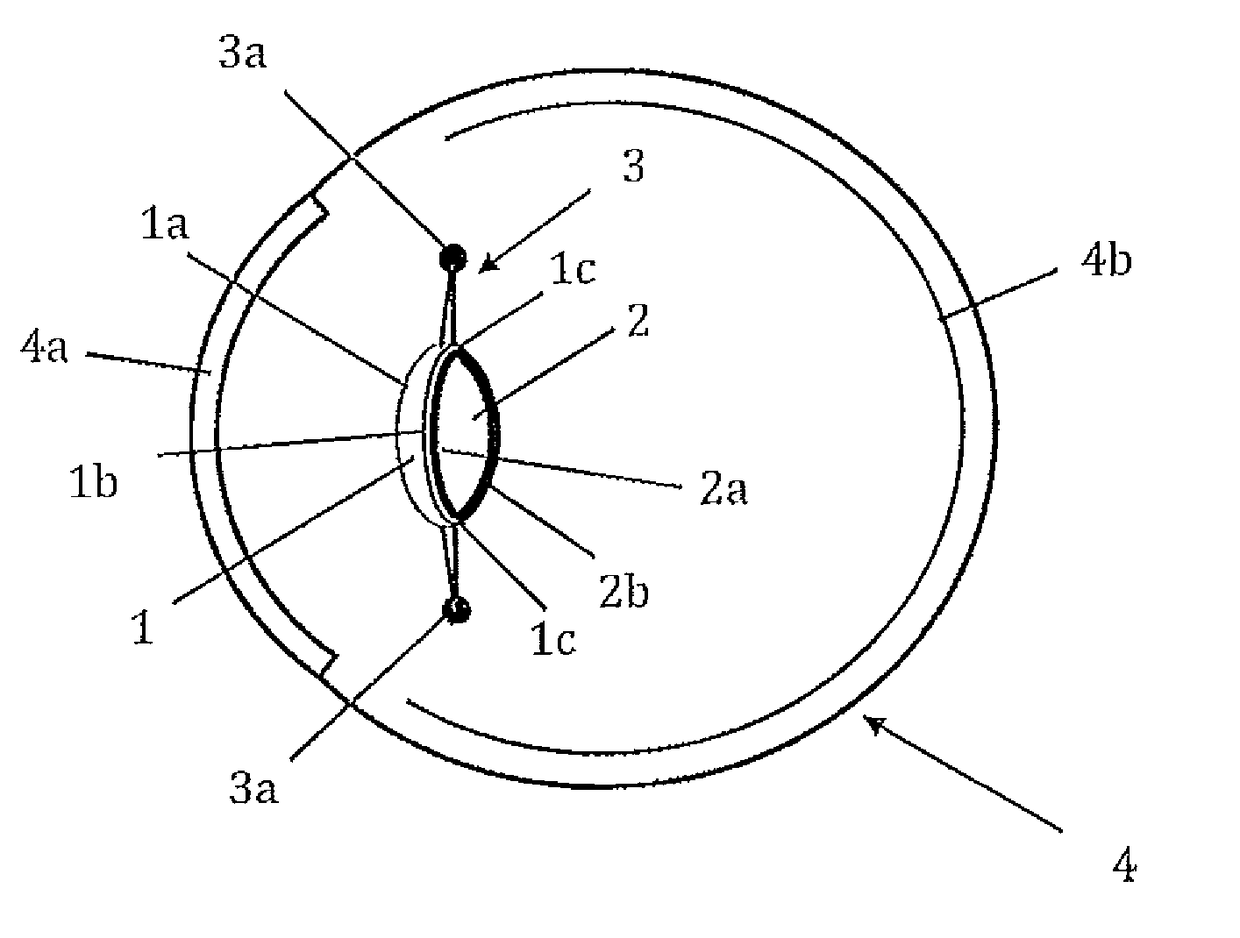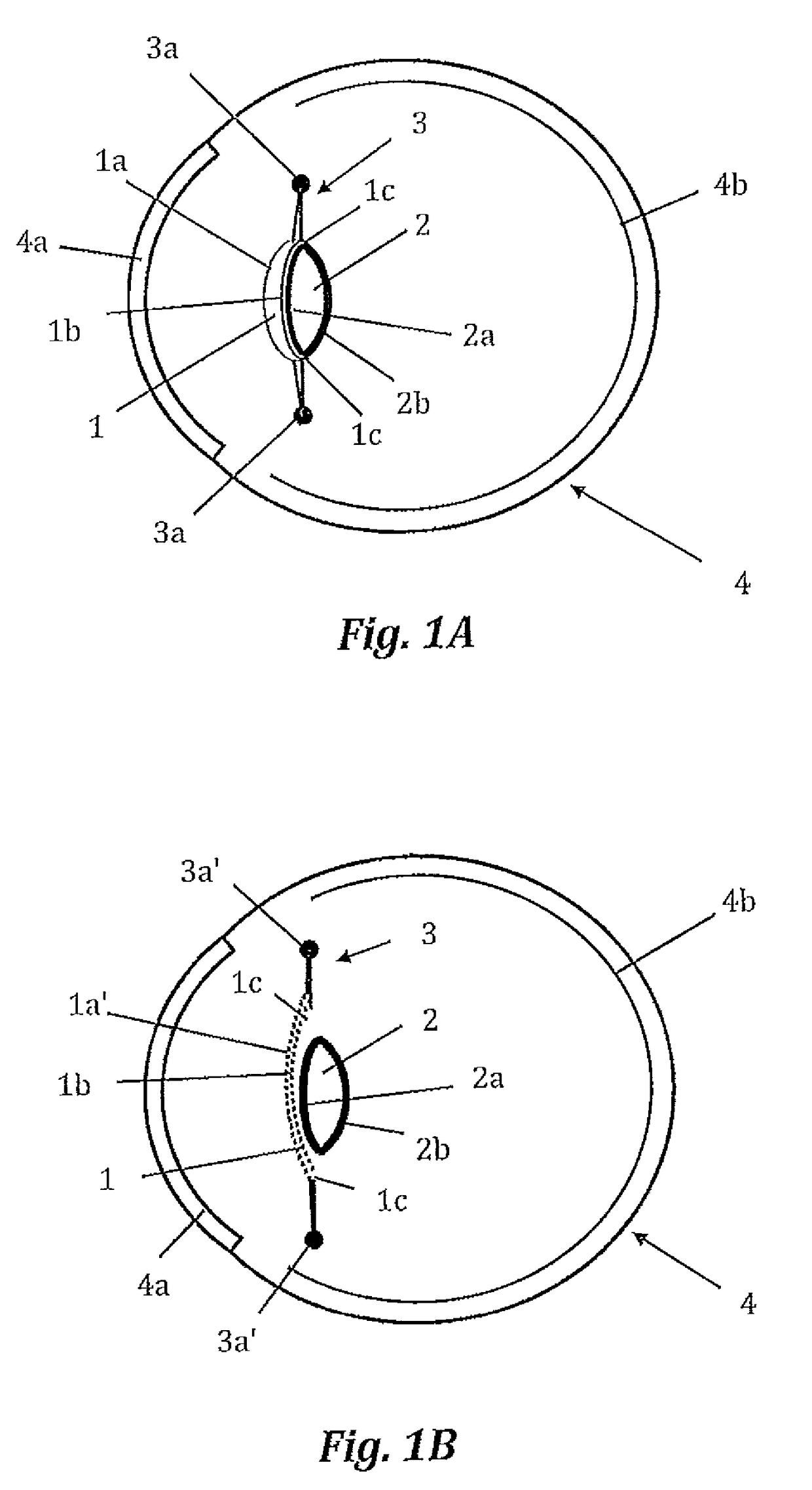Intraocular lens with accommodation capacity
a technology of intraocular lenses and ophthalmology, which is applied in the field of ophthalmic intraocular lenses, can solve the problems of dramatic change of mechanical properties of capsular bags, loss of elasticity and transparency, and clinical unviability of capsular refilling techniques, so as to achieve precise control of the shape of the rheumatism, remove capsular opacification, and improve the effect of ophthalmic correction
- Summary
- Abstract
- Description
- Claims
- Application Information
AI Technical Summary
Benefits of technology
Problems solved by technology
Method used
Image
Examples
first embodiment
[0071]FIG. 1A is a schematic lateral sectional view of the intraocular lens of the invention implanted in an eye with its first optical member in a condition of accommodation;
[0072]FIG. 1B is a schematic view corresponding to the first embodiment of intraocular lens according to FIG. 1A with the first optical element in a condition of disaccommodation;
[0073]FIG. 2 is another schematic view corresponding to the first embodiment of intraocular lens according to FIGS. 1A and 1B;
second embodiment
[0074]FIG. 3 is a schematic lateral sectional view of the intraocular view ;
third embodiment
[0075]FIG. 4 is a schematic lateral sectional view of the intraocular view ;
PUM
 Login to View More
Login to View More Abstract
Description
Claims
Application Information
 Login to View More
Login to View More - R&D
- Intellectual Property
- Life Sciences
- Materials
- Tech Scout
- Unparalleled Data Quality
- Higher Quality Content
- 60% Fewer Hallucinations
Browse by: Latest US Patents, China's latest patents, Technical Efficacy Thesaurus, Application Domain, Technology Topic, Popular Technical Reports.
© 2025 PatSnap. All rights reserved.Legal|Privacy policy|Modern Slavery Act Transparency Statement|Sitemap|About US| Contact US: help@patsnap.com



